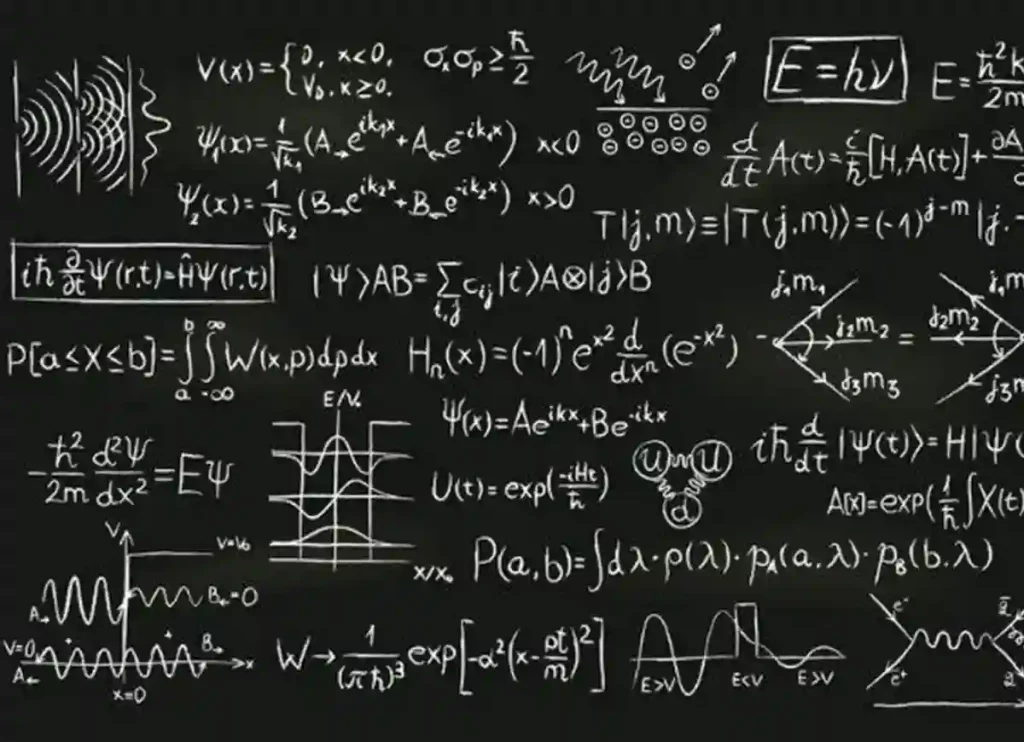What is The Hardest Math Problem in The World Mathematics has long been considered a realm of intricate and profound challenges, captivating the minds of scholars and enthusiasts alike.
Throughout history, mathematicians have grappled with a multitude of complex problems, pushing the boundaries of human understanding and unlocking the secrets of the universe.
Among these enigmatic puzzles, some stand out as particularly daunting and elusive, captivating the imagination of both professionals and amateurs. One such challenge, often heralded as the hardest math problem in the world, has become a symbol of intellectual rigor and persistence.
While there are various contenders for this title, a problem that consistently emerges as a formidable test of mathematical prowess is the Riemann Hypothesis.
The Riemann Hypothesis, proposed by the German mathematician Bernhard Riemann in 1859, revolves around the properties of the zeta function, a mathematical function that arises in number theory.
The hypothesis seeks to understand the distribution of prime numbers and addresses the behavior of the zeta function in complex numbers. It postulates that all non-trivial zeros of the zeta function lie on a specific line in the complex plane, known as the critical line.
However, despite nearly 160 years of intense investigation by brilliant mathematicians, a conclusive proof or disproof of the Riemann Hypothesis remains elusive.
The significance of the Riemann Hypothesis extends far beyond its abstract nature. Its resolution would have profound implications for various branches of mathematics, such as number theory, analysis, and mathematical physics.
Furthermore, it holds great potential for applications in cryptography, coding theory, and even the distribution of prime numbers. The problem’s complexity and profound implications have attracted numerous mathematicians, each hoping to make a breakthrough that could reshape our understanding of the mathematical landscape.
While the Riemann Hypothesis is often regarded as one of the most challenging problems in mathematics, it is not alone in its claim to this title.
Mathematics is replete with a multitude of formidable conundrums, such as the Birch and Swinnerton-Dyer Conjecture, the P versus NP problem, and the Navier-Stokes existence and smoothness problem, among others. Each of these problems presents its own unique set of complexities, pushing the limits of human mathematical knowledge.
The pursuit of solving these formidable mathematical challenges serves not only as a testament to the human intellect but also as a driving force for the advancement of mathematics itself.
It represents the ceaseless quest to unravel the mysteries of the universe through logic and reasoning, pushing the boundaries of human comprehension.
As mathematicians continue to delve into the depths of these enigmatic problems, the hope of discovering a solution that unlocks new realms of knowledge remains an enduring fascination for both scholars and enthusiasts alike.
Suggested Read: algebra functions and data analysis

What is The Hardest Math Problem in The World : The Collatz Conjecture
The Collatz Conjecture, also known as the 3n+1 Conjecture or the Ulam Conjecture, is a famous unsolved problem in mathematics that has intrigued mathematicians for decades. Proposed in 1937 by German mathematician Lothar Collatz, the conjecture is deceptively simple to state but has proven incredibly difficult to prove or disprove.
The conjecture revolves around a sequence of numbers generated by a specific algorithm. Start with any positive integer n. If n is even, divide it by 2; if it is odd, multiply it by 3 and add 1. The resulting number becomes the next term in the sequence. By repeatedly applying this rule to each subsequent number, a sequence of integers is generated.
For example, starting with the number 6, the sequence would be: 6, 3, 10, 5, 16, 8, 4, 2, 1. According to the Collatz Conjecture, no matter which positive integer n you start with, the sequence will eventually reach the value of 1.
Despite its simplicity, the Collatz Conjecture remains an unsolved problem in mathematics. Mathematicians have extensively tested the conjecture using computers and have verified its validity for incredibly large numbers. However, a general proof that establishes the conjecture for all positive integers still eludes the mathematical community.
The Collatz Conjecture has attracted the attention of mathematicians, computer scientists, and enthusiasts due to its apparent simplicity coupled with its resistance to rigorous proof. Its tantalizing nature lies in the possibility that a relatively straightforward mathematical problem could hide complex underlying patterns and structures that have yet to be discovered.
Efforts to solve the Collatz Conjecture have led to the development of new techniques, mathematical tools, and computational methods. Despite the absence of a conclusive solution, the problem continues to captivate the mathematical community, serving as a reminder of the inherent beauty and mystery of mathematics.
As mathematicians continue to explore the Collatz Conjecture, the hope remains that a breakthrough will eventually shed light on the underlying principles governing the behavior of this intriguing sequence of numbers.
Until then, the Collatz Conjecture stands as a testament to the enduring challenges and uncharted territories that still await discovery within the realm of mathematics.
Suggested Read: Math kangaroo past papers
Goldbach’s Conjecture
Goldbach’s Conjecture is one of the oldest unsolved problems in number theory. Proposed by the German mathematician Christian Goldbach in a letter to the Swiss mathematician Leonhard Euler in 1742, the conjecture poses a tantalizing question about the nature of even numbers.
The conjecture states that every even integer greater than 2 can be expressed as the sum of two prime numbers. In other words, if we take any even number, such as 4, 10, 20, or any other even number, there should exist two prime numbers that add up to that even number. For example, 4 can be expressed as 2 + 2, 10 can be expressed as 3 + 7, and 20 can be expressed as 7 + 13.
Despite being proposed over two centuries ago, Goldbach’s Conjecture remains unproven. Numerous efforts have been made to verify the conjecture for increasingly large even numbers, and it holds true for vast numbers of cases. However, a general proof that establishes the conjecture for all even numbers has yet to be found.
The conjecture has garnered attention due to its simplicity and the fact that it applies to all even numbers, making it a wide-ranging and fundamental problem in number theory. Mathematicians have developed various approaches, techniques, and computational methods to tackle Goldbach’s Conjecture, but it remains elusive.
Progress has been made on specific variations of the conjecture, such as the weak Goldbach conjecture, which allows the sum of three prime numbers to represent even numbers.
In 2013, the Peruvian mathematician Harald Helfgott proved a variant known as the ternary Goldbach conjecture, which states that every odd number greater than 5 can be expressed as the sum of three prime numbers.
The pursuit of Goldbach’s Conjecture continues to captivate mathematicians, and the conjecture itself serves as a testament to the enduring challenges and mysteries of number theory.
While progress has been made, a general proof for all even numbers remains an open question, awaiting the discovery of new insights, techniques, or mathematical breakthroughs. Until then, Goldbach’s Conjecture stands as a fascinating and unsolved problem, inspiring ongoing research and exploration in the field of number theory.
Suggested Read: Basic geometry worksheets pdf
Twin Prime Conjecture
The Twin Prime Conjecture is an intriguing problem in number theory that focuses on pairs of prime numbers that are separated by a difference of 2, such as (3, 5), (11, 13), or (17, 19). Proposed by the ancient Greek mathematicians, the conjecture suggests that there are infinitely many twin primes.
More formally, the conjecture states that for any given prime number, there exists another prime number that is precisely 2 units greater. This implies an infinite sequence of twin primes, stretching out to infinity.
Despite its simple statement, the Twin Prime Conjecture has proven to be quite challenging to prove. Mathematicians have made significant progress towards understanding the distribution of prime numbers, but a conclusive proof of the infinitude of twin primes has remained elusive.
In recent years, there have been notable advances related to the conjecture. In 2013, Yitang Zhang, a mathematician from the University of New Hampshire, made a breakthrough by proving that there are infinitely many pairs of primes that are at most 70 million units apart. This was a significant step forward but fell short of proving the conjecture outright.
Building upon Zhang’s work, subsequent mathematicians refined the techniques and reduced the gap even further. In 2014, the renowned mathematician Terence Tao and his collaborators proved that there are infinitely many pairs of primes with a gap no larger than 246 units.
Although progress has been made, a full proof of the Twin Prime Conjecture that demonstrates the infinitude of twin primes for all positive integers remains an open problem. Mathematicians continue to explore new approaches, refine existing techniques, and employ sophisticated tools in the quest for a conclusive solution.
The Twin Prime Conjecture embodies the allure and challenge of unsolved problems in mathematics. Its pursuit has led to significant advancements in number theory and has deepened our understanding of prime numbers.
While a definitive proof is yet to be discovered, the conjecture remains a source of fascination and a testament to the enduring mysteries that lie within the realm of prime numbers.
Suggested Read: Algebra 2 formula sheet pdf
Riemann Hypothesis
The Riemann Hypothesis is one of the most famous and consequential unsolved problems in mathematics. It was formulated by the German mathematician Bernhard Riemann in 1859 and revolves around the behavior of the Riemann zeta function.
The Riemann zeta function is a complex-valued function defined for complex numbers s with a real part greater than 1. It is given by the infinite series ζ(s) = 1^(-s) + 2^(-s) + 3^(-s) + …, where the terms represent the reciprocals of the positive integers raised to the power of s. The zeta function has fascinating connections to prime numbers and is a central object in number theory.
The Riemann Hypothesis postulates that all non-trivial zeros of the Riemann zeta function lie on a specific line in the complex plane known as the critical line. This critical line has a real part equal to 1/2. Trivial zeros are the negative even integers, such as -2, -4, -6, etc. Non-trivial zeros, if the Riemann Hypothesis holds true, would all lie on the critical line.
The significance of the Riemann Hypothesis lies in its profound implications for the distribution of prime numbers. A proof of the hypothesis would provide deep insights into the nature of prime numbers and their distribution among the positive integers.
It would establish a clear and elegant structure governing the behavior of prime numbers and help resolve long-standing questions in number theory.
Over the years, the Riemann Hypothesis has been extensively studied and verified for a vast number of non-trivial zeros. The numerical evidence strongly suggests that the hypothesis is true. However, a general proof that encompasses all non-trivial zeros has remained elusive.
Its complexity and the lack of complete understanding of the zeta function in the critical strip continue to challenge mathematicians.
The Riemann Hypothesis has inspired a wealth of research, innovative approaches, and the development of mathematical tools and techniques. Its resolution would have far-reaching consequences, impacting various areas of mathematics, such as prime number theory, complex analysis, and even cryptography.
Despite intense efforts by numerous mathematicians, the Riemann Hypothesis remains an open problem. Its unsolved nature underscores the beauty, depth, and mystery of mathematics, driving mathematicians to continue exploring new avenues in the pursuit of a definitive proof.
Until then, the Riemann Hypothesis stands as a monumental challenge, tantalizing mathematicians with the potential to unlock profound truths about the nature of prime numbers and the distribution of primes among the integers.
Suggested Read: Geometry formulas pdf
Swinnerton-Dyer Conjecture
The Swinnerton-Dyer Conjecture is a prominent unsolved problem in mathematics that lies within the realm of elliptic curves, which are fundamental objects in algebraic geometry and number theory. The conjecture was proposed by British mathematicians Bryan Birch and Peter Swinnerton-Dyer in the 1960s.
The conjecture establishes a connection between the arithmetic properties of elliptic curves and the behavior of their associated L-functions. An elliptic curve is a type of smooth curve defined by an equation with certain properties. Each elliptic curve has an associated L-function, which encodes important information about the distribution of its rational points.
The Swinnerton-Dyer Conjecture states that the rank of the group of rational points on an elliptic curve is related to the behavior of its L-function at a particular point. Specifically, if the L-function has a non-vanishing value at that point, then the elliptic curve has infinitely many rational points, and its rank is greater than or equal to 1. On the other hand, if the L-function has a zero at that point, then the elliptic curve has only finitely many rational points, and its rank is 0.
The Swinnerton-Dyer Conjecture provides deep insights into the connection between the arithmetic of elliptic curves and the behavior of their L-functions. It has been extensively studied and verified for many specific cases, contributing to our understanding of the behavior of elliptic curves and the distribution of rational points.
However, despite significant progress and numerical evidence supporting the conjecture, a general proof that establishes the conjecture for all elliptic curves is still lacking. The conjecture remains open, presenting mathematicians with a challenging and fascinating problem to explore.
The Swinnerton-Dyer Conjecture has motivated extensive research in the field of elliptic curves and has led to the development of new techniques, theories, and computational methods. Solving the conjecture would provide a deeper understanding of the interplay between algebraic geometry, number theory, and the arithmetic properties of elliptic curves.
As mathematicians continue to investigate the Swinnerton-Dyer Conjecture, the hope remains to uncover the underlying principles that govern the behavior of elliptic curves and their associated L-functions. Its resolution would not only contribute to the advancement of mathematics but also have implications for related fields such as cryptography and the study of rational points on curves.
Suggested Read: algebra 2 cheat sheet pdf
Kissing Number Problem
The Kissing Number Problem is a fascinating problem in mathematics that deals with arrangements of spheres in space. The problem is named after the idea of spheres “kissing” or touching each other without overlapping.
In the context of the Kissing Number Problem, the goal is to determine the maximum number of non-overlapping identical spheres that can touch another sphere in a given space dimension. More precisely, it seeks to find the maximum number of spheres that can simultaneously touch a central sphere in a configuration called a “kissing arrangement.”
For example, in two-dimensional space (the plane), the kissing number is 6. This means that a central sphere can touch at most 6 surrounding spheres in a way that they are all tangent without overlapping. In three-dimensional space, the kissing number is 12, as demonstrated by the familiar arrangement of 12 spheres around a central sphere in a cuboctahedral pattern.
The Kissing Number Problem becomes more challenging in higher dimensions. In fact, determining the exact kissing numbers for dimensions higher than three remains an unsolved problem. However, some lower and higher bounds have been established.
For dimensions four, eight, and 24, the kissing numbers are known. In four dimensions, the kissing number is 24. In eight dimensions, it is 240, and in 24 dimensions, it is 196,560.
The Kissing Number Problem has connections to various areas of mathematics, including geometry, packing problems, and sphere-packing in particular. It has implications in fields such as crystallography, coding theory, and optimization.
Efforts to solve the Kissing Number Problem involve the use of mathematical tools, such as lattice theory, algebraic geometry, and optimization techniques. Computer simulations and mathematical algorithms are also employed to explore possible configurations and analyze kissing arrangements in different dimensions.
While the exact kissing numbers in higher dimensions remain unknown, mathematicians continue to investigate and make progress toward better bounds and understand the underlying structures and symmetries of kissing arrangements. The Kissing Number Problem stands as a captivating challenge in the study of spatial configurations and the optimization of sphere packing in different dimensions.
Suggested Read: Hard Math Problems For 12th Graders
Unknotting Problem
The Unknotting Problem, also known as the Recognition Problem for the Unknot, is a fundamental question in the field of knot theory. It deals with determining whether a given knot can be continuously deformed into a simple, unknotted loop without any self-intersections.
Formally, the problem asks whether a given knot in three-dimensional space is equivalent to the unknot, which is essentially a closed loop with no twists or crossings. The goal is to establish an algorithmic method or a set of criteria that can reliably determine whether a given knot is the unknot or not.
The Unknotting Problem is of significant interest in knot theory, as it relates to the fundamental question of classifying knots and understanding their properties. Solving this problem would contribute to our understanding of the structure of knots, their topology, and their relationship to other mathematical objects.
The Unknotting Problem is known to be computationally difficult. In fact, it belongs to a class of problems called NP-hard, which means that verifying a solution is relatively easy, but finding a solution can be computationally challenging.
Various techniques and approaches have been developed to tackle the Unknotting Problem. These include studying knot invariants, such as the Alexander polynomial or the Jones polynomial, which can provide information about the properties of a knot.
Additionally, topological techniques, geometric methods, and computational algorithms are employed to analyze the structure and properties of knots.
While progress has been made in identifying specific classes of knots that can be easily recognized as the unknot, a general algorithm or criterion for determining whether an arbitrary knot is the unknot is yet to be found. The Unknotting Problem remains an active area of research, and mathematicians continue to explore new avenues and develop new tools to tackle this challenging problem.
The Unknotting Problem exemplifies the depth and complexity of knot theory and its connections to other branches of mathematics. As mathematicians strive to unravel the mysteries of knots, the quest to efficiently recognize and understand the unknot remains an ongoing endeavor, promising further insights into the nature of knots and their mathematical properties.
Suggested Read: 12th Grade Math Problems
Questions & Answers : What is The Hardest Math Problem in The World
Q: What is the Riemann Hypothesis?
A: The Riemann Hypothesis is a conjecture proposed by Bernhard Riemann in 1859. It relates to the behavior of the zeta function, a mathematical function that arises in number theory. The hypothesis states that all non-trivial zeros of the zeta function lie on a specific line in the complex plane, known as the critical line. It has profound implications for the distribution of prime numbers and has attracted significant attention from mathematicians for over a century.
Q: Why is the Riemann Hypothesis considered one of the hardest math problems in the world?
A: The Riemann Hypothesis is widely regarded as one of the most challenging problems in mathematics due to its complex nature and the inability to prove or disprove it conclusively. Despite significant efforts by renowned mathematicians, including the development of new mathematical tools and theories, a solution has yet to be found. Its resolution would have far-reaching implications for multiple areas of mathematics and its applications in cryptography, coding theory, and prime number distribution make it a problem of great significance.
Q: Are there other math problems that are considered as difficult as the Riemann Hypothesis?
A: Yes, there are several other math problems that are considered as difficult as the Riemann Hypothesis. Some notable examples include the Birch and Swinnerton-Dyer Conjecture, which concerns the connection between elliptic curves and prime numbers; the P versus NP problem, which deals with the complexity of computational algorithms; and the Navier-Stokes existence and smoothness problem, which relates to the behavior of fluid flow equations. Each of these problems presents its own set of complexities and remains unsolved, challenging mathematicians to find solutions.
Q: What drives mathematicians to pursue these difficult math problems?
A: Mathematicians are driven by a combination of intellectual curiosity, the desire to understand the fundamental principles of mathematics, and the potential practical applications that may arise from solving these problems. The pursuit of difficult math problems represents the quest for knowledge and the challenge of pushing the boundaries of human understanding. The resolution of these problems not only enhances our knowledge of mathematics but also has the potential to impact various scientific and technological fields, making them enticing and rewarding endeavors for mathematicians.
Suggested Read: 2023 Math Challenge 1-100 Answer Key
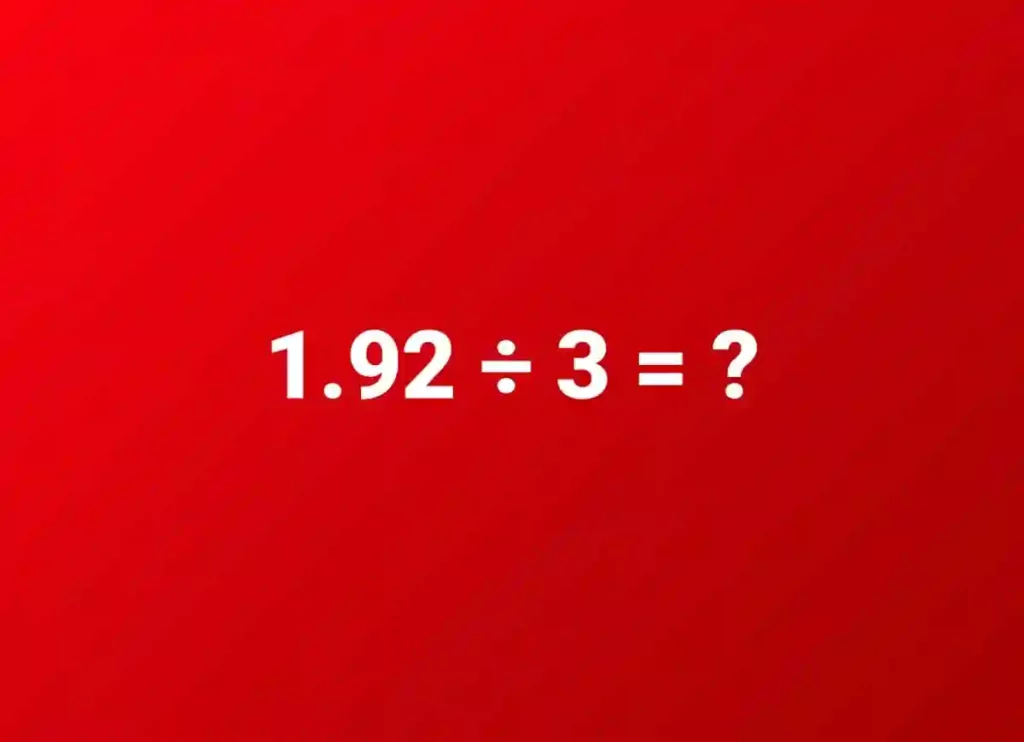
Conclusion
In conclusion What is The Hardest Math Problem in The World? , pinpointing the single hardest math problem in the world is a daunting task due to the vastness and diversity of mathematics.
The field encompasses a myriad of unsolved problems that challenge mathematicians’ intellect, creativity, and persistence. These problems span various branches of mathematics, including number theory, algebra, geometry, and topology.
Some notable contenders for the title of the hardest math problem include the Riemann Hypothesis, which explores the behavior of the Riemann zeta function and the distribution of prime numbers, and the P versus NP problem, which delves into the nature of computational complexity and whether certain problems can be efficiently solved.
Other challenging problems, such as the Collatz Conjecture, the Birch and Swinnerton-Dyer Conjecture, and the Hodge Conjecture, push the boundaries of our mathematical understanding in different areas. These problems have eluded complete resolution despite decades, or even centuries, of intense research and exploration.
It is important to note that the difficulty of a math problem often lies not only in its complexity but also in the lack of sufficient tools, techniques, or breakthroughs to tackle it. Some problems may require the development of entirely new mathematical theories or the discovery of profound insights to unlock their solutions.
Moreover, the notion of the “hardest” math problem can be subjective, as different mathematicians may have varying perspectives and areas of expertise. What may be a formidable challenge for one mathematician could be a more tractable problem for another.
Nevertheless, the pursuit of the hardest math problems fuels mathematical research and innovation. These problems inspire collaboration, interdisciplinary approaches, and the constant refinement of mathematical tools and techniques. The quest to solve them drives the advancement of mathematics itself and leads to unexpected discoveries and insights along the way.
Ultimately, the existence of unsolved math problems serves as a testament to the boundless beauty, intricacy, and depth of mathematics.
While we may not definitively identify the singular hardest math problem, the collective efforts to solve these challenging problems continuously expand our knowledge, reshape our understanding of the mathematical universe, and pave the way for new discoveries and advancements in the field.
Also Read:
- Noetic Math Contest 2022
- Where To Take An IQ Test?
- Where Can I Take An IQ Test?
- 11 Best Preschool Free IQ Tests for Kids
- IQ Test For Kids 10-15 Free PDF Download
- Free Mathematical Mindsets By Jo Boaler
- Mindset Mathematics Grade K By Jo Boaler
- Mindset Mathematics Grade 1 By Jo Boaler
- Mindset Mathematics Grade 2 By Jo Boaler
- Mindset Mathematics Grade 3 By Jo Boaler
- Mindset Mathematics Grade 4 By Jo Boaler
- Mindset Mathematics Grade 5 By Jo Boaler
- Mindset Mathematics Grade 6 By Jo Boaler
- Mindset Mathematics Grade 7 By Jo Boaler
- Mindset Mathematics Grade 8 By Jo Boaler
